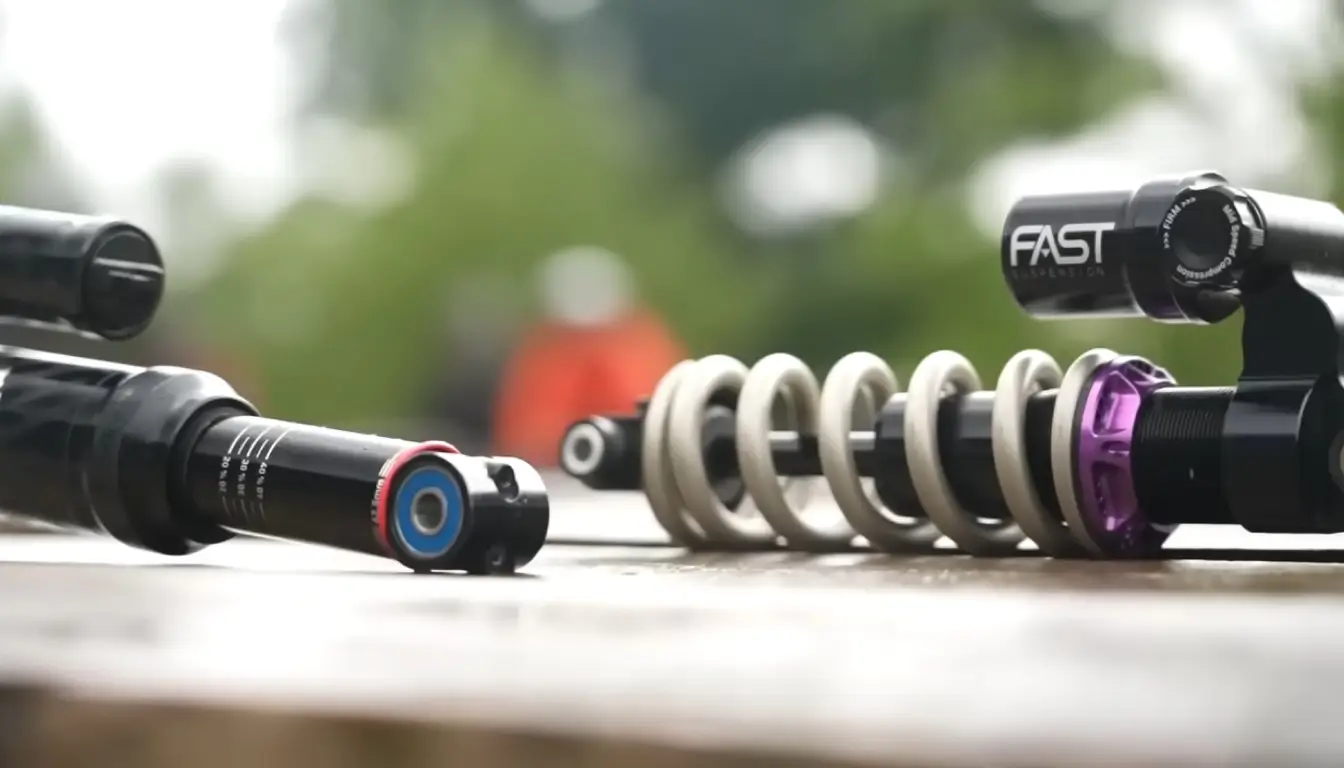What’s the best way to get your mountain bike suspension back in pristine condition? You could take it to your local bike shop and have them do a full service, or you could take matters into your own hands and do it yourself.
Both air vs coil have their pros and cons, so which one is best for you? The coil spring is considered a much more reliable and stronger option because it has a steel core and can absorb more pressure.
However, coil springs aren’t as progressive and offer less travel for a given amount of weight. For more details on the pros and cons, check out our blog post here.
Air Vs Coil: Comparison Table
The Air vs Coil question is a common one among MTBers. It’s a tough decision, but this table builds the comparison of the two types of shocks.
| Air Spring | Coil Spring |
| Highly tuneable | Small bump sensitivity |
| Stroke suppleness is good | Don’t have sufficient troke suppleness |
| Lighter | Heavier |
| Change under heat | Heat laible |
| Not easy to maintain | Easy to maintain |
Air Shock
This will be a great option if you raise and lower the bike. This will have the huge convenience of adjusting the air pressure on the fly so you can fine-tune that ride.
The other advantage that air suspension will have over a coil shock is the ease with which you can go between solo and two-up riding, where a coil adjustment would need to be made in your pre-load on one of these shocks.
You’re gonna be able to either push your button on your handlebar control or like a two-way toggle switch, and you’re gonna be able to add and take away the pressure to account for that passenger.
So you’re always at your optimal sag. If you’re riding this, you know, five days a week, and on the weekend you’re too up, you may need to pop the bags off and make a spring adjustment.
Coil shock
If you’re a shorter rider, maybe you need to get to a certain point where being sited on a coil shock isn’t going to give you its max compressed length; that’s where this will come in.
You don’t have to be penalized for needing your bike lower because you can do it temporarily.
These are only going to go so low because if you get much lower than something like a 12-inch shock from us. Which sits at 11.5 inches beyond that, you just start giving up too much suspension travel, and they just don’t ride to our expectations.
Air Vs Coil: Key Differences
We break down some of the key differences between these two types of suspension so that you can make an informed decision.
- Spring Rate
Air shocks are typically more responsive, reacting faster to changes in rider input. They’ve shorter stroke lengths than coil shocks, which can also make them feel less fatiguing over time.
Coil shocks are typically heavier but also stiffer and offer a smoother ride. They generally offer a longer stroke length that can produce more stability and comfort when riding over bumpy terrain or in rough conditions.
- Weight
Air shocks are typically lighter than coil shocks. A high-end coil shock with a tune can be heavier than an air shock with a simple spring.
Different designs and features affect the weight of a shock. For example, some coil shocks are made from aluminum, which is lighter than steel.
Even within the same design, one brand’s air spring may be lighter than another’s version of the same length.
- Stiction
Coil shocks have less stiction than air shocks which generally contributes to a smoother feeling and ride. Air suspensions have more stiction and are generally less smooth than coil shocks.
- Downhill Performance
Bikes equipped with air shocks are said to be more fun to ride and more amenable to jumping and popping off trail obstacles due to the more progressive nature of the shocks. However, heat fading may occur in air shocks on lengthy downhills, as noted before.
Compressing an air spring causes the real shock to heat up, making the air spring stronger and the damping faster or less efficient due to the thinner shock oil at high temperatures.
This will become more of an issue as your downhill runs increase in length and difficulty.
- Tunability
Air shocks are more tunable than coil shocks. Air shocks are available in 8 compression adjustments, while coil shocks are only available in two compression adjustments.
They’re also more easily changed from one rider to another as it’s much easier to change the rebound lever on an air shock than a coil shock
Why Ride A Coil Shock?
There are a few reasons to ride a coil shock over an air shock. Coil shocks tend to have better small bump compliance, meaning they absorb impacts from small bumps in the trail better.
They also require less maintenance than air shocks since no air canister can leak air over time. Finally, coil shocks are more durable than air shocks since they don’t have as many moving parts.
Why Ride An Air Shock?
Riding an air shock is a great way to improve your suspension and overall riding experience. Air shocks are more adjustable than coil shocks, meaning you can fine-tune your ride to match your riding style and terrain.
They also tend to be lighter than coil shocks, making your bike easier to handle on the trail.
FAQs
Can you lock sout a coil shock?
Yes, finding the lockout feature is a matter of personal preference and can vary by manufacturer.
What is the difference between air and coil forks?
Air springs are commonly found on a cruiser and touring bikes because they offer a more comfortable ride for casual cyclists. Coil forks, on the other hand, are more commonly found on mountain bikes, as they offer better performance for racing or off-road use.
Which is better, air shocks or regular shocks?
Air shocks are essentially a compressor that uses air as their medium. The air in the shock acts as its fluid, providing much more consistent damping and control than standard coil shocks.
Are coil shocks better for jumping?
Yes, coil shocks provide more consistent damping and can take a beating without being destroyed. However, don’t attempt to jump with air shocks because of their limited range of motion and harsh ride quality.
Do air shocks need springs?
Air shocks generally do not need springs and can be tuned to provide a more comfortable ride. Most modern air shocks are self-tuning and will adjust to provide a more comfortable ride as long as they are tightened properly.
Final Word
So, what’s the best for your riding style, terrain, and conditions? Air shocks are typically lighter than coil shocks, making your bike easier to ride. Coil shocks are more durable than air shocks due to the lack of moving parts, so they’re ideal on rougher trails with large jumps or drops.
We hope to help you decide on the best shock for your bike between air vs coil. So, let’s get out and ride!

I am Ryan Ford, a mountain biking enthusiast who loves to explore the outdoors. I also like to go on adventures with friends and anything else that involves being outside. I love my bike because it gets me out of the house and gives me an opportunity to enjoy nature.

